Xiaomi Corp (小米) is preparing a self-designed mobile processor for its upcoming smartphones in an effort to reduce its reliance on foreign suppliers Qualcomm Inc and MediaTek Inc (聯發科).
The processor might help Xiaomi be more self-sufficient and stand out in an Android market led by Qualcomm customers.
Mass production of the chip designed in-house is expected to begin next year, people familiar with the matter said.
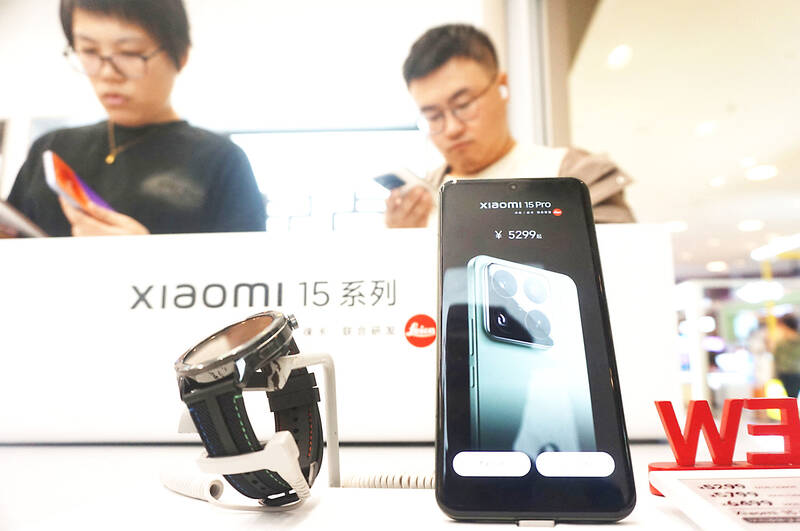
Photo: AFP
The timeframe underscores how Xiaomi is keen to join a growing number of tech majors investing in semiconductors, a key focus for Beijing in a broader tech race with the US.
For the Beijing-based company, it marks a foray into yet another cutting-edge field in a year in which Xiaomi also invested heavily in electric vehicles (EVs).
Developing in-house chipmaking expertise can help the company’s efforts toward making smarter and better-connected EVs, above and beyond more competitive mobile devices.
A Xiaomi spokesperson did not respond to requests for comment.
Xiaomi’s nascent semiconductor work could pose a challenge for the chip manufacturer it contracts this production to, as industry leader Taiwan Semiconductor Manufacturing Co (台積電) faces escalating pressure from US authorities to curtail its business with customers from China.
The Chinese smartphone maker, which counts Qualcomm as an early investor, works closely with its US partner, and has generally been content to optimize the main processor and augment it with power management and graphics enhancements.
Xiaomi will invest about 30 billion yuan (US$4.1 billion) in research and development next year, up from 24 billion yuan this year, chairman and chief executive officer Lei Jun (雷軍) said last month.
The research will focus on core technologies such as artificial intelligence, operating system improvements and chips, Lei said.
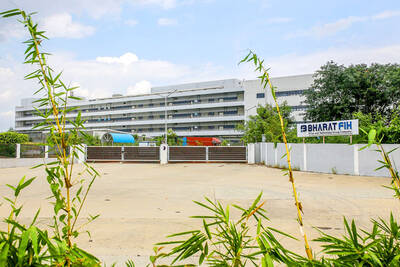
SETBACK: Apple’s India iPhone push has been disrupted after Foxconn recalled hundreds of Chinese engineers, amid Beijing’s attempts to curb tech transfers Apple Inc assembly partner Hon Hai Precision Industry Co (鴻海精密), also known internationally as Foxconn Technology Group (富士康科技集團), has recalled about 300 Chinese engineers from a factory in India, the latest setback for the iPhone maker’s push to rapidly expand in the country. The extraction of Chinese workers from the factory of Yuzhan Technology (India) Private Ltd, a Hon Hai component unit, in southern Tamil Nadu state, is the second such move in a few months. The company has started flying in Taiwanese engineers to replace staff leaving, people familiar with the matter said, asking not to be named, as the
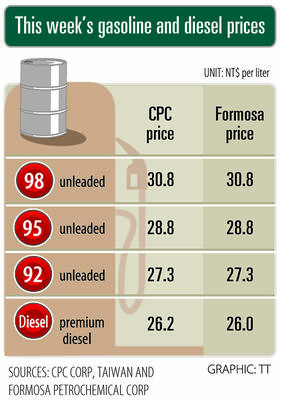
The prices of gasoline and diesel at domestic fuel stations are to rise NT$0.1 and NT$0.4 per liter this week respectively, after international crude oil prices rose last week, CPC Corp, Taiwan (台灣中油) and Formosa Petrochemical Corp (台塑石化) announced yesterday. Effective today, gasoline prices at CPC and Formosa stations are to rise to NT$27.3, NT$28.8 and NT$30.8 per liter for 92, 95 and 98-octane unleaded gasoline respectively, the companies said in separate statements. The price of premium diesel is to rise to NT$26.2 per liter at CPC stations and NT$26 at Formosa pumps, they said. The announcements came after international crude oil prices
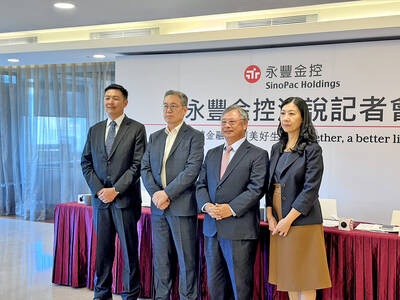
SinoPac Financial Holdings Co (永豐金控) is weighing whether to add a life insurance business to its portfolio, but would tread cautiously after completing three acquisitions in quick succession, president Stanley Chu (朱士廷) said yesterday. “We are carefully considering whether life insurance should play a role in SinoPac’s business map,” Chu told reporters ahead of an earnings conference. “Our priority is to ensure the success of the deals we have already made, even though we are tracking some possible targets.” Local media have reported that Mercuries Life Insurance Co (三商美邦人壽), which is seeking buyers amid financial strains, has invited three financial
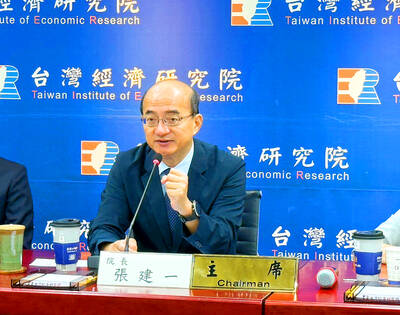
CAUTION: Right now, artificial intelligence runs on faith, not productivity and eventually, the risk of a bubble will emerge,’ TIER economist Gordon Sun said Taiwanese manufacturers turned more optimistic last month, ending a five-month streak of declining sentiment as concerns over US tariffs, currency volatility and China’s overcapacity began to ease, the Taiwan Institute of Economic Research (TIER) said yesterday. The manufacturing business confidence index rose 1.17 points from June to 86.8, its first rebound since February. TIER economist Gordon Sun (孫明德) attributed the uptick to fading trade uncertainties, a steadier New Taiwan dollar and reduced competitive pressure from Chinese producers. Taiwan’s semiconductor industry is unlikely to face significant damage from Washington’s ongoing probe into semiconductors, given the US’ reliance on Taiwanese chips to power artificial